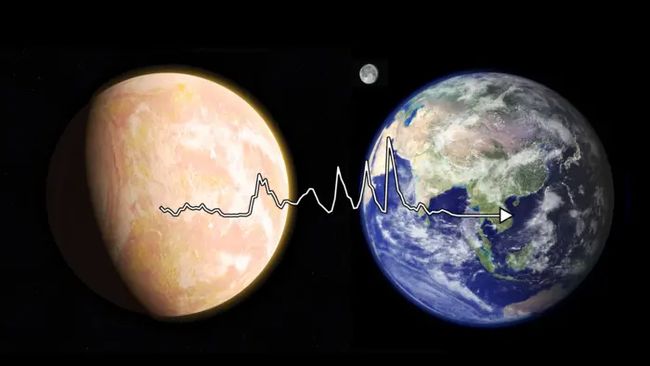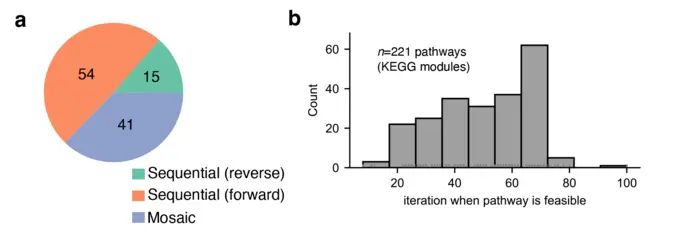A potential missing link in Earth’s chemical history may have been discovered
That means that there can be a link between the reactions that took place on Earth millions of years ago and the reactions that occur in the current world.

A group of researchers employed computational modeling to explore the idea of being able to trace the present day biochemistry to the basic non-living chemicals on early Earth and how they evolved to the complex hierarchy seen today.
Biologists presume that the chemical mechanisms which are considered vital for life support nowadays emerged from the geological and chemical conditions of the early Earth, given the available components and energy on this planet. However, there are still no sufficient proofs as to how people have transitioned from the use of geochemistry present in the ancient times that the present day usage of biochemistry.
Previous modeling attempts have offered valuable insights, yet they consistently encountered a roadblock: the inability of synthesising many of the sophisticated molecules that enable the complex functioning of life in the modern world. It is still not clear why such a limitation has been placed on it.
Another critical aspect of the concept of metabolic clocks concerns a unique continuity of metabolic timeline, concerning both the prehistoric influences of metabolic timelines that might have been subsequently eradicated from the biochemical processes now still in existence.
Thus, the research team from Tokyo Institute of Technology and California Institute of Technology stressed the significance of potential ‘extinct’ Biochemistry to work under the initial conditions of the Earth’s formation as a foundation for the emergence of modern metabolism. It leads to certain speculation about the significance of these lost biochemical transformations in the formation of the metabolic relations that are characteristic at the present stage.
A metabolic mystery
Dr Seán Jordan of Dublin City University, specialised in biogeochemistry and astrobiology, shared his thoughts on this subject of apparent concern: It is intriguing and thrilling to even consider that there could be some of those ancient metabolic pathways active today and still we could not notice these. In this case, the team conducting the study employed the Kyoto Encyclopedia of Genes and Genomes database that comprises of biochemical reaction collection. This database is built upon the model included in the context of this paper, which enabled the researchers to extrapolate the given chemical reaction network, in regards to the compounds that may have existed on early Earth.
These compounds comprised of several other metal elements, inorganic species and the organic bases which may have been precipitated from carbon-fixing reactions that existed in the early earth’s environment. Jordan congratulated the team for using a network expansion algorithm as it is a rigid approach and can work in iterations to study the correlation of the early geochemistry and the later emergence of a network of metabolites.
However, the origin works of the model failed to fully recreate the molecules active in current biochemical structures. To overcome this shortcoming, the researchers populating the Kyoto database by entailing hypothetical biochemical reactions and thus 20883 new pathway have been added.

Performing the experiment with the identified twice as broad reaction set only slightly increased the scope indicating that known and even yet to be expected biochemistry does not include transformations to produce the vast majority of known metabolites.
The authors observed that a crucial intermediate in the synthesis of a class of compounds called purines, which are critical for biological molecules including DNA and RNA, was omitted from the model for the expansion of its chemical space. Indeed, when a simple trial was conducted, in which adenine, a typical purine derivative, was included in the pool of seed compounds, the coefficient increased by 50 percent, meaning the model could predict the existence of more of the modern biomolecules.
The authors further explored what they described as a ‘purine bottleneck’, which, it appears, inhibits the transition of metabolism from geochemical precursors in the model. The problem seemed to concern a modern set of biochemical reactions, in which purines, such as, for example, adenosine triphosphate (ATP), self-catalyze the process. This means several stages in the synthetic pathway of ATP involve the use of ATP — ATP is the only precursor of new ATP. This self-cycling was taking the model to an impasse.
To address this dilemma, the scientists posited this self-catalytic demand and supply dependence could have been ‘less stringent’ in primitive metabolic pathways: The role ATP now fulfills might have been performed, by inorganic molecules such as polyphosphates. By substituting ATP in the Seven’s reactions, where it was necessary only for eight reactions in the database, it was possible to recreate nearly all of the contemporary core metabolism.
“We might never know exactly, but our research yielded an important piece of evidence: For instance, according to one of the article authors, Harrison Smith: “To connect geochemistry with biochemistry, only eight new reactions, all of which mimic familiar biochemical reactions, are required. ”This does not suggest that the space of the missing biochemistry is small, but it does tell us that even reactions which have become extinct can be recovered from evidence remaining within the contemporary sphere of biochemistry.
Jordan added, ‘The big question that remains unanswered is whether we can show experimentally that the steps from geochemistry to biochemistry are possible following a trajectory such [this]. ”These findings should inspire others in the scientific community to continue to investigate this transition. It proves to us that the recipe for the chemistry that produced the first life is traceable in the current biochemistry. ”
The study was published in March in the journal Nature Ecology & Evolution.
Do not forget to share your opinion with us to provide you with the best posts !



0 Comments